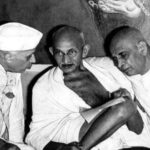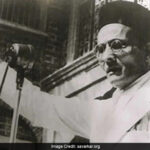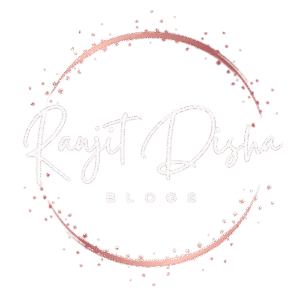The Role of Social Media in Promoting or Stopping Violence: A Double-Edged SwordSocial media has become one of the most powerful tools in today’s world. It influences opinions, drives social movements, and shapes our understanding of current events. However, this incredible power comes with responsibility — and a darker side. While platforms like Facebook, Twitter, Instagram, and YouTube have been used to promote peace and raise awareness about violence, they have also been misused to incite hate, spread misinformation, and fuel violent acts.
In this blog, we’ll dive deep into t he Role of Social Media in Promoting or Stopping Violence: A Double-Edged Sword and how social media promotes violence, how it stops violence, and what can be done to create a safer online world.
How Social Media Promotes Violence
1. Rapid Spread of Misinformation and Hate Speech
One major downside of social media is its ability to spread false information rapidly.
Misinformation, especially during tense situations like elections, protests, or riots, can spark anger, fear, and ultimately violence.
Studies have shown that false news spreads faster than truth — often because it is sensational and emotionally charged.
Example:
During the 2020 Delhi riots, numerous fake videos and edited images circulated on WhatsApp and Facebook, intensifying communal hatred.
2. Online Radicalization
Extremist groups actively use social media to recruit, radicalize, and organize people towards violent causes.
Algorithms, designed to keep users engaged, often push people into echo chambers where extreme views are normalized.
Over time, exposure to extremist content can lead individuals to believe violence is a justified form of action.
Example:
Terror groups like ISIS used Twitter and Telegram to spread propaganda and recruit fighters globally.
3. Cyberbullying and Online Harassment
The anonymity and reach of social media make it easy for individuals to harass others without immediate consequences.
Cyberbullying, harassment, and doxing (publishing private information) have led not only to mental trauma but also to violent retaliations and even suicides.
Example:
In many cases, victims of online bullying have either been driven to self-harm or violent responses against perpetrators.
4. Live Streaming of Violent Acts
Social media platforms have seen a rise in violent acts being livestreamed to gain attention or fame.
This not only desensitizes viewers but sometimes inspires “copycat” acts, where others seek similar notoriety.
Example:
The Christchurch mosque attack in New Zealand was live-streamed on Facebook, causing global shock and raising serious concerns about content moderation
How Social Media Stops or Reduces Violence
Despite its dangers, social media also plays a critical role in stopping violence and promoting peace.
Here’s how:
1. Raising Awareness and Mobilizing Support
Social media is a powerful tool for raising awareness about injustices and violence.
Campaigns like #BlackLivesMatter, #MeToo, and #StopAsianHate gained global traction through online platforms.
These movements have led to real-world protests, policy changes, and greater public consciousness.
2. Real-Time Reporting and Documentation
Platforms like Twitter and Instagram allow citizens to report violence and human rights abuses in real-time.
This can force authorities to act, raise media attention, and provide evidence for justice proceedings.
Example:
During the Arab Spring, citizen journalists using smartphones and Twitter played a huge role in exposing violence by oppressive regimes.
3. Community Building and Peace Initiatives
Online communities focused on conflict resolution, peace-building, and support groups offer safe spaces for dialogue.
Social media provides platforms for cross-cultural communication and mutual understanding, which can prevent violent escalations.
Example:
Interfaith groups on Facebook and Reddit have successfully created bridges between religious communities in conflict zones.
4. Fact-Checking and Debunking Misinformation
In recent years, platforms have invested in partnerships with fact-checkers to combat misinformation.
Services like Facebook’s third-party fact-checking program and Twitter’s “Community Notes” help users identify false narratives and avoid being manipulated into violent actions.
The Role of Governments, Tech Companies, and Users
To maximize the positive potential of social media and minimize its risks, a joint effort is required:
1. Government Regulations
Governments worldwide are introducing laws aimed at holding tech companies accountable for violent content on their platforms.
However, care must be taken to avoid censorship that stifles freedom of expression.
2. Responsibility of Social Media Companies
Big tech companies must:
Invest more in AI and human moderators to detect harmful content faster.
Improve transparency regarding algorithms that promote content.
Offer better reporting tools and faster takedown processes.
Design systems that discourage hate speech and violence amplification.
3. User Responsibility
Every social media user has a role to play:
Think critically before sharing content.
Verify information from trusted sources.
Report harmful or violent posts.
Promote positivity and peaceful dialogue.
The Future of Social Media and Violence Prevention
Looking ahead, several trends offer hope:
1. Advancements in AI Moderation
Machine learning is becoming more sophisticated in detecting hate speech, violent imagery, and coordinated misinformation campaigns.
With better AI, violent content can be identified and removed faster before it causes harm.
2. Ethical Design of Algorithms
There is growing demand for ethical technology — platforms that prioritize user well-being over engagement time.
Future algorithms could favor accurate, positive, and diverse content rather than extreme or polarizing material.
3. Strengthened Online Communities for Peace
Digital diplomacy, virtual peace campaigns, and global forums will likely become stronger, connecting people across cultures to share common values of humanity.
Final Thoughts
Social media is undeniably a double-edged sword in the context of violence.
While it can spread hate, radicalize users, and trigger real-world violence, it can also raise awareness, mobilize positive action, and foster peace.
The future lies in how governments, tech companies, and we — the users — work together to shape a safer, more responsible online environment.
By being mindful, critical, and compassionate online, we can ensure that social media becomes a tool for hope, not hate.
FAQs on Social Media and Violence
Q1. How does social media cause violence?
Social media can spread misinformation, promote hate speech, radicalize users, and allow bullying and harassment, all of which can lead to violence.
Q2. How can social media help prevent violence?
It can raise awareness, document abuses, create communities for peace, and spread fact-checked information.
Q3. What steps can users take to promote peace on social media?
Verify information, avoid sharing hateful content, report violent material, and engage in positive dialogues.
Related posts:
 The Impact of Social Media on Food Culture: A Digital Revolution
The Impact of Social Media on Food Culture: A Digital Revolution
 How Gen Z is Redefining Cultural Identity Through Social Media
How Gen Z is Redefining Cultural Identity Through Social Media
 The Role of Chandra Shekhar Azad in Indian Independence
The Role of Chandra Shekhar Azad in Indian Independence
 What Was The Role Of Jawaharlal Nehru In Indian Independence Movement?
What Was The Role Of Jawaharlal Nehru In Indian Independence Movement?
 The Role of Gut Microbiome in Overall Health: The Hidden Ecosystem Within You
The Role of Gut Microbiome in Overall Health: The Hidden Ecosystem Within You
 What Was The Role Of Vinayak Damodar Sawarkar In Indian Independence Movement?
What Was The Role Of Vinayak Damodar Sawarkar In Indian Independence Movement?
